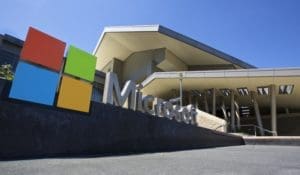 Last week, Microsoft CEO Satya Nadella published a memo announcing major changes to the leadership structure at the company. Perhaps it was an extension of the vision he has carried from the beginning, but it also seemed to be a tacit acknowledgement that the future of the company was no longer on the desktop.
Last week, Microsoft CEO Satya Nadella published a memo announcing major changes to the leadership structure at the company. Perhaps it was an extension of the vision he has carried from the beginning, but it also seemed to be a tacit acknowledgement that the future of the company was no longer on the desktop.
It was in the cloud.
At the same time, Windows exec and 21 year Microsoft veteran Terry Myerson announced he was leaving the company. This would appear to be a signal that the desktop is taking less priority at Microsoft. Meanwhile, Scott Guthrie, who had been running for the company’s cloud effort got a fairly significant bump in responsibility.
As Nadella wrote, “Second, Scott Guthrie will expand his existing responsibilities to lead a new team focused on Cloud + AI Platform. The purpose of this team is to drive platform coherence and compelling value across all layers of the tech stack starting with the distributed computing fabric (cloud and edge) to AI (infrastructure, runtimes, frameworks, tools and higher-level services around perception, knowledge and cognition).”
The cloud and artificial intelligence have been an increasingly large priority for Microsoft and it doesn’t seem surprising that Guthrie will be ascending, while Myerson is leaving.
Whither the desktop
While a significant part of the reorganization involved devices and Joe Belfiore was named to run Windows, replacing Myerson, it still felt, at least on some level, like Nadella really needed to pick up Windows when he wrote, “The future of Windows is bright as we continue to innovate across new scenarios and device form factors, and more deeply connect to our Microsoft 365 offerings.” Note that even the Windows announcement was linked to the cloud piece, the 365 family of products.
When Google came out with the Chrome OS in June 2011 with the release of the first Chromebook computer, it was an early vision of just how the cloud could be used without the need for heavyweight desktop operating system. You didn’t need much of an underlying OS system because the browser effectively became the OS.
While Microsoft clearly isn’t ready to go quite that far yet, last week’s announcement is at the very least, a veiled acknowledgement that the operating system as we know it is a vestige of the past when we needed a strong OS to run our computers.
That is no longer the case, and as the cloud has taken increasing precedence in general, the reorganization at Microsoft reflects this reality. We can get most of the functionality and even compute power from the cloud. Why do we need Windows or any OS for that matter?
That is not to say the desktop OS will simply disappear any time soon, but it does suggest that it will begin to play a lesser role over time, and at some point, as Google has shown, may not even really be required at all.
Photo: Courtesy of Microsoft

Windows as users know it and have used it in the past will take in another form it it will never disappear because a platform is needed with the end user in control and not AI in the cloud.
I believe organisations will have a two tier layer of functionality with intranet and internet with amongst all this the security questions that are being left behind because we don’t live in an ideal world.
Which ever direction Microsoft takes and the speed it applies it’s product offerings to user expectations, perception will play a huge role with the underlying reality of delivery.